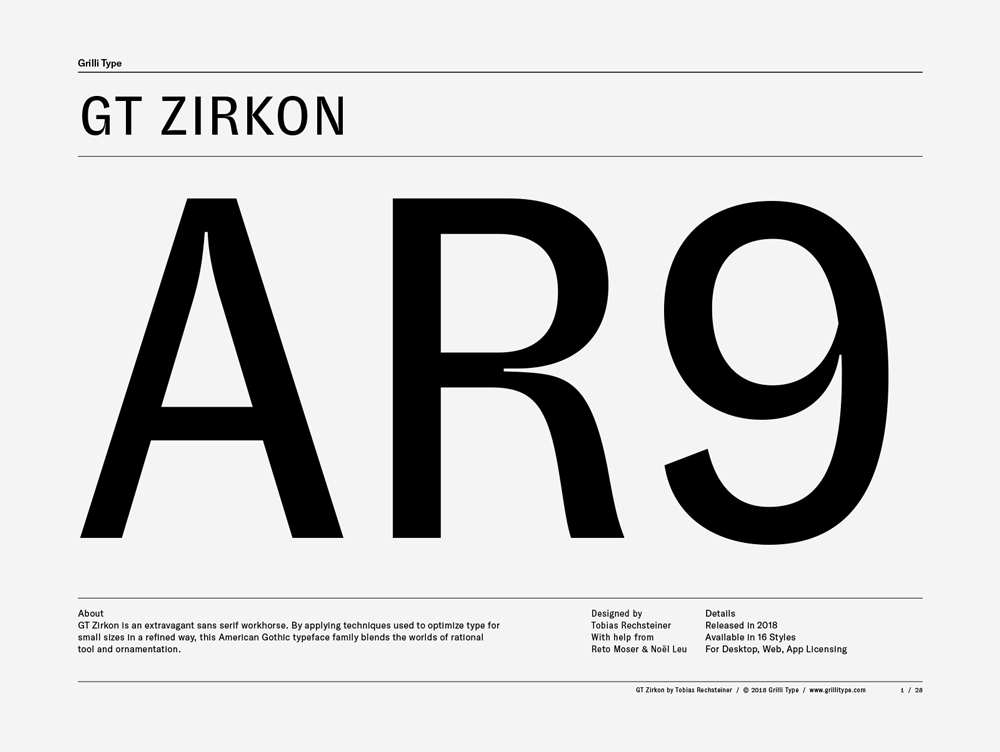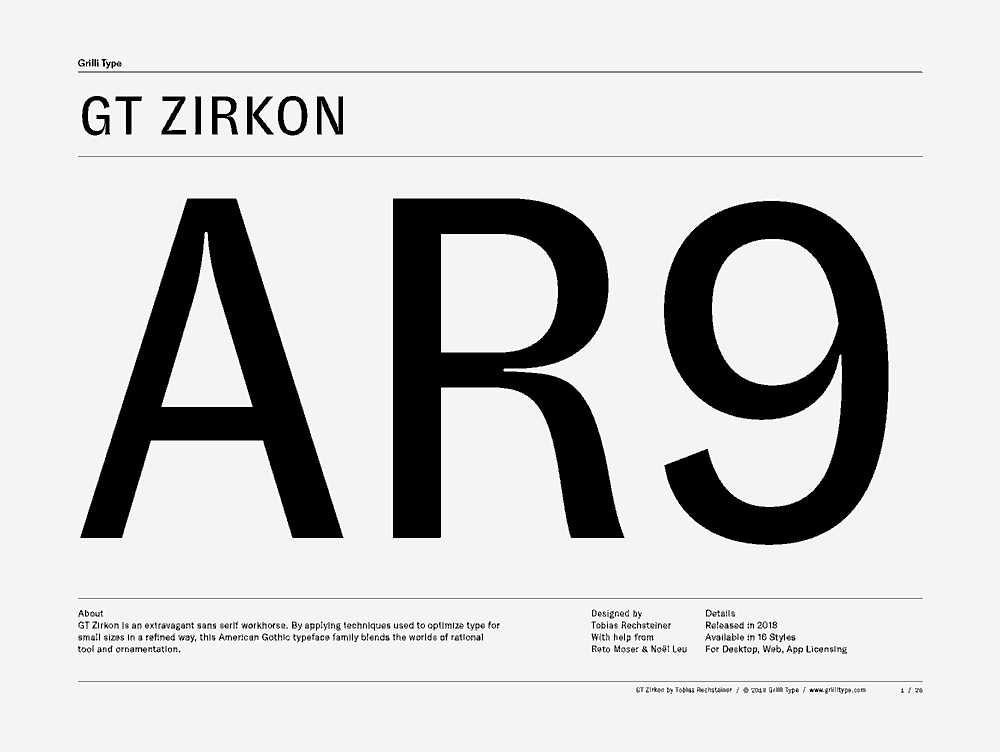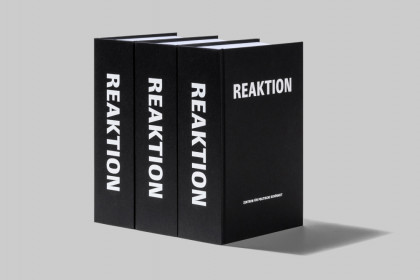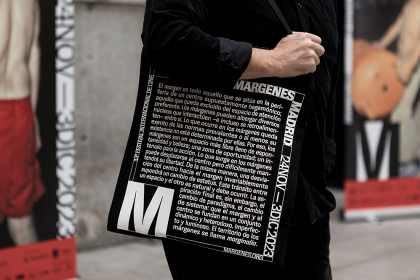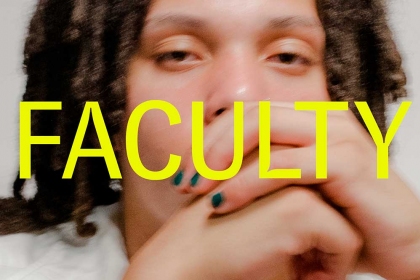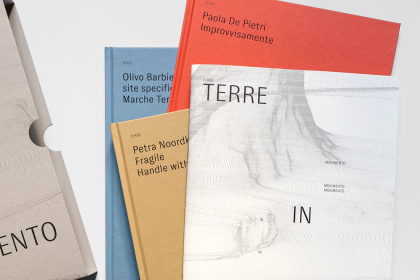GT Zirkon
Family overview
- Ultra Light Italic
- Thin Italic
- Light Italic
- Book Italic
- Regular Italic
- Medium Italic
- Bold Italic
- Black Italic
- Ultra LightThe name derives from the Persian zargun meaning gold-hued; this word is corrupted into “jargoon”, a term applied to light-colored zircons.
- Ultra Light ItalicCrystals are almost always terminated with a pyramidal termination, and may be doubly terminated, and occasionally entirely pyramidal resembling an octahedron.
- ThinSome rocks, such as limestone or quartzite, are composed primarily of one mineral—calcite or aragonite in the case of limestone, and quartz in the latter case.
- Thin ItalicAustralia leads the world in zircon mining, producing 37% of the world total and accounting for 40% of world EDR for the mineral.
- LightRadioactive dating shows that the zircon crystals were formed more than 4 billion years ago.
- Light ItalicThe English word “zircon” is derived from “Zirkon”, which is the German adaptation of this word.
- BookAustralia leads the world in zircon mining, producing 37% of the world total and accounting for 40% of world EDR for the mineral.
- Book ItalicZircon is ubiquitous in the crust of Earth and it occurs as a common accessory mineral in igneous rocks, in metamorphic rocks and as detrital grains in sedimentary rocks.
- RegularChemical substitution and coordination polyhedra explain this common feature of minerals.
- Regular ItalicZircon is ubiquitous in the crust of Earth and it occurs as a common accessory mineral in igneous rocks, in metamorphic rocks and as detrital grains in sedimentary rocks.
- MediumMineral classification schemes and their definitions are evolving to match recent advances in mineral science.
- Medium ItalicMineral classification schemes and their definitions are evolving to match recent advances in mineral science.
- BoldCurrently, zircons are typically dated by uranium-lead (U-Pb), fission-track, cathodoluminescence, and U+Th/He techniques.
- Bold ItalicManly P. Hall and other students of esoteric wisdom have also noted that many ancient crystals were produced by ‘zodiacal formulae’ grown at specific times, when the sun, moon and planets were in special heavenly positions.
- BlackDuring the growth process, crystals are also highly susceptible to consciousness imprinting, whereby the meditations, through-patterns, healing energy or bioelectric field identity of the grower may be enjoined within the crystalline structure and memory.
- Black ItalicResearchers found that same carbon 12 isotope in the diamond specks, indicating that they may have been formed from ancient microbes that were buried deep underground and subjected to enormous pressure.
- Settings
Typeface information
GT Zirkon is an extravagant sans serif workhorse. It blends the worlds of rational tool and ornamentation by applying techniques used to optimize type for small sizes in a refined way.
Typeface features
OpenType features enable smart typography. You can use these features in most Desktop applications, on the web, and in your mobile apps. Each typeface contains different features. Below are the most important features included in GT Zirkon’s fonts:
- SS01
- Alternate Arrows
Volume ↗
- SS02
- Alternate f
Refraction
- ONUM
- Oldstyle Figures
0123456789
- SMCP
- Small Caps
Ore Deposit
Typeface Minisite
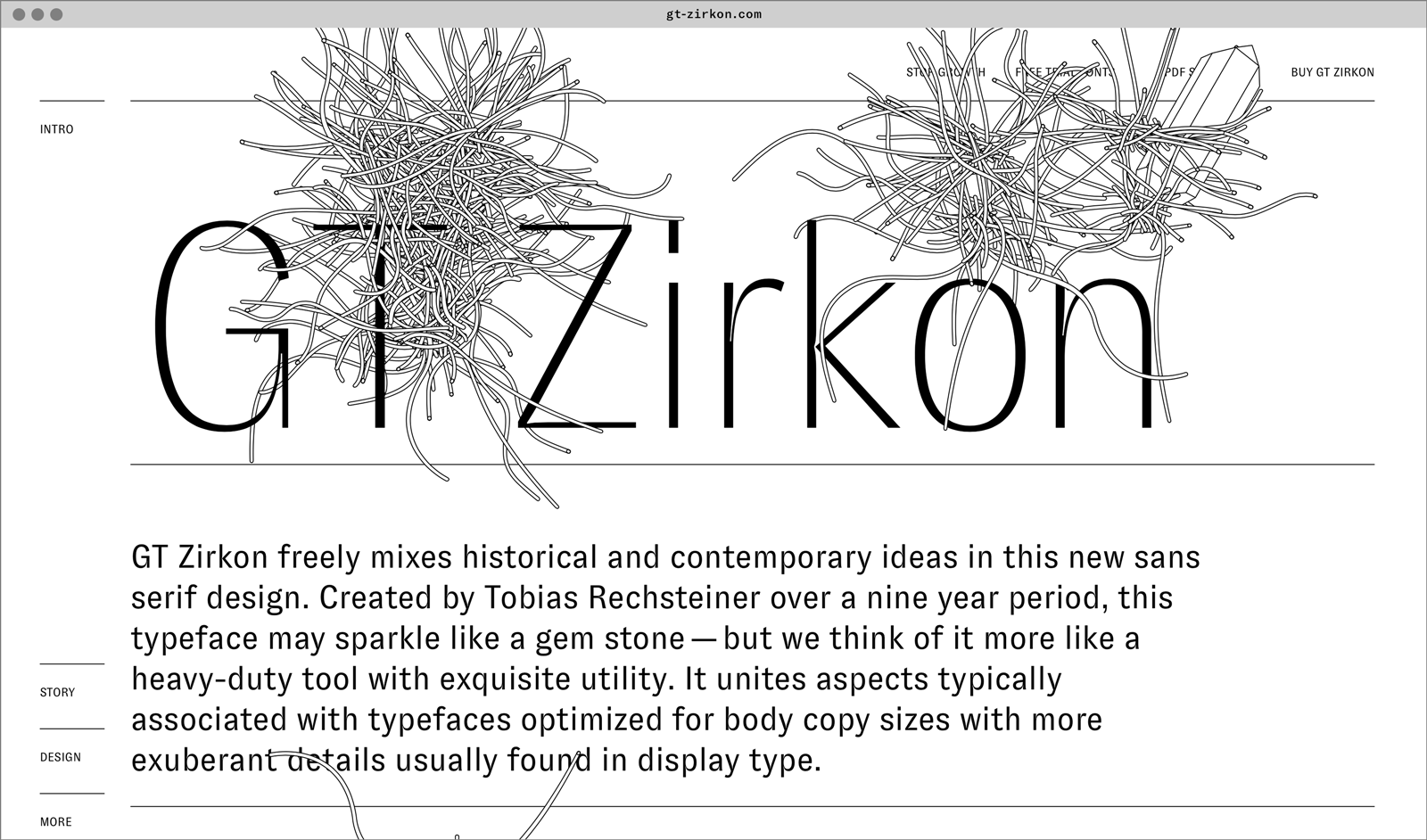
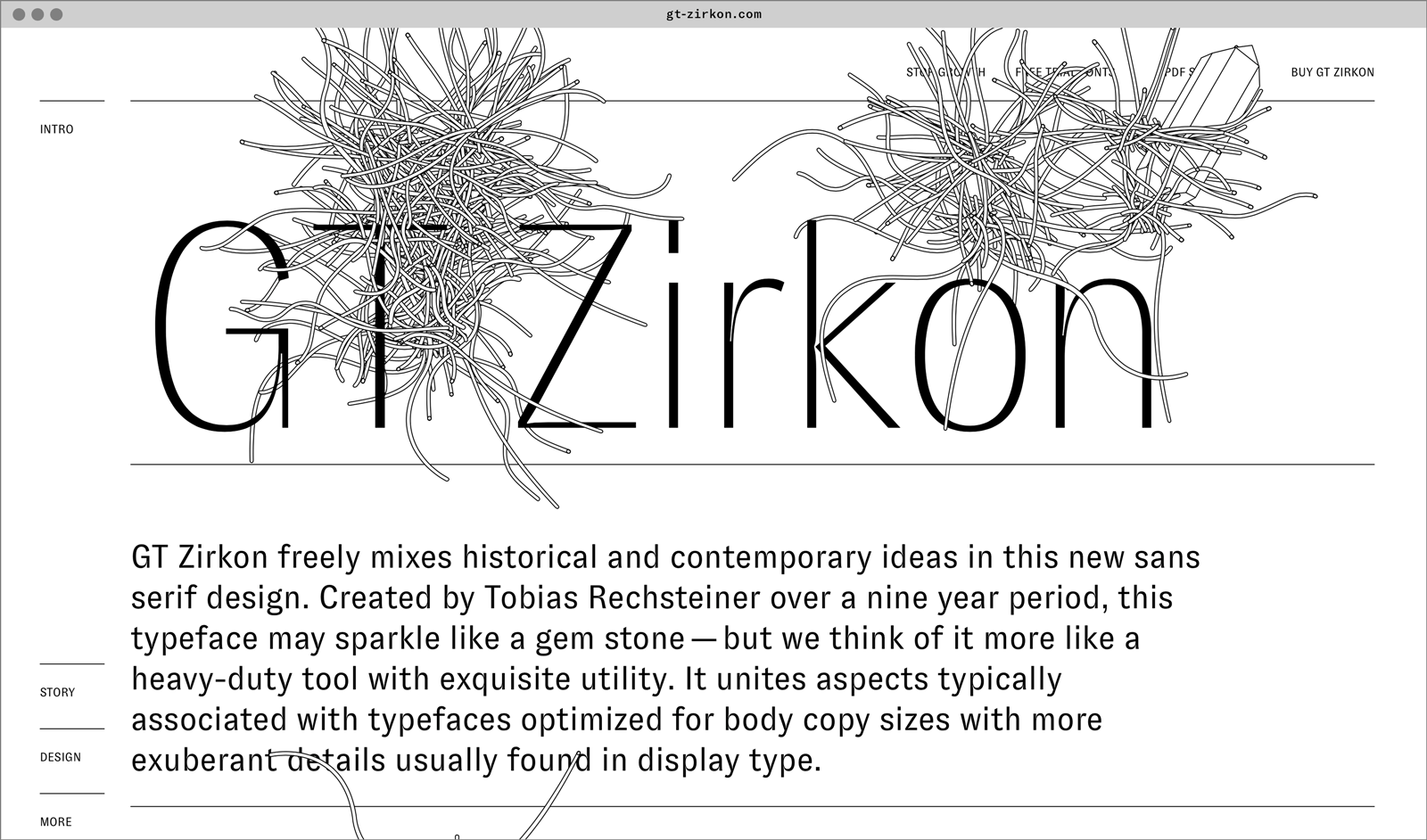
- Visit the GT Zirkon minisite to discover more about the typeface family’s history and design concept.
GT Zirkon in use
